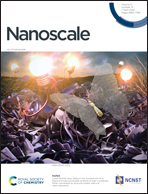Functional carbon nitride materials for water oxidation: from heteroatom doping to interface engineering
Abstract
Polymeric carbon nitrides (PCNs) are promising photocatalysts and electrocatalysts for water oxidation, as they are environmentally benign materials with an adjustable structure and facilely synthesized from inexpensive and abundant starting materials. In this minireview, we examine the state-of-the-art strategies for tailoring PCNs for efficient photocatalytic, electrocatalytic, and photoelectrochemical water oxidation, including heteroatom doping and interface engineering from band structure alignment (e.g., by coupling inorganic or organic semiconductors) to hybridization with nanoscale cocatalysts (e.g., nanosheets, nanoarrays, nanoparticles, and quantum dots) and sub-nanoscale cocatalysts (e.g., metallic molecular clusters and single-atom catalysts). Through establishing the structure–activity correlations, we aim to present a clear roadmap for providing insights into the design strategies, structure modification, and the improved catalytic performances of PCN-based materials in different catalytic water oxidation processes. For future guidance, we also propose some outlooks on the perspective and challenges of PCNs towards a better application in catalytic water oxidation.

- This article is part of the themed collection: Recent Review Articles


 Please wait while we load your content...
Please wait while we load your content...